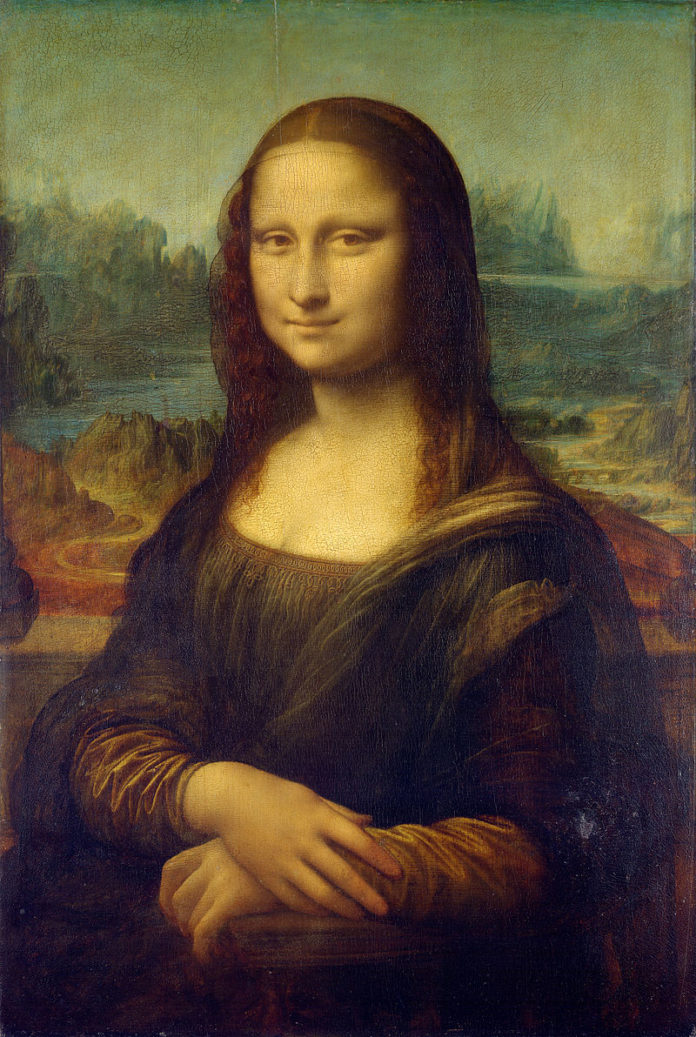
In this ongoing series, Fine Art Today delves into the world of portraiture, highlighting historical and contemporary examples of superb quality and skill. This week we discuss the most famous portrait ever painted.
Perhaps it was the painting’s theft in 1911, or the fact that its creator carried it with him during the final years of his life and never delivered it to its patron. Maybe it was the Dadaists and Marcel Duchamp toying with her image in the early 20th century, or that the identity of the sitter was unknown for nearly 500 years. Whatever reason you ascribe, there can be no doubt that Leonardo da Vinci’s “Mona Lisa” is the most famous, researched, and debated portrait ever made.
Some of you may agree, others not, but I find the legend of “Mona Lisa” nauseating, especially after an underwhelming viewing of the painting in the Louvre Museum in 2001. Surrounded by hundreds of tourists eagerly snapping photos, I climbed my way through the hordes to catch a glimpse. My first reaction: “That’s IT?” Lisa stared at me with that ambiguous smile through her three-inch-thick, bulletproof glass case as if the joke were on me — and everyone else; and it was. As I stood in her presence for the first time, I had an epiphany (even at 14 years old) that has stuck to this day: She’s just a splendid portrait by one of history’s greatest artists, nothing more, nothing less.
Lisa’s tale is one of caution. Caution to recognize that sometimes we dig too far and stretch the limits of art historical interpretation to the point that a painting becomes something else — something entirely different and far removed from what it really is. It happens all the time, but the case of “Mona Lisa” has been boiling over for at least two centuries.
This isn’t to say that the painting isn’t exquisite — a stunning visualization of a beautiful woman in Da Vinci’s famed sfumato (Italian for “smoky”) technique. Nor is it to deny the canonical triangular composition, nuanced and enigmatic expression, or provoking uneven landscape beyond. Rather, recognize the painting for what it actually is: a fantastic Renaissance portrait of Lisa Gherardini, wife of Florentine merchant Francesco del Giocondo, produced by one of the greatest artistic geniuses of the Western world. In this way, Da Vinci’s “Mona Lisa” still achieves adoration and acclaim as a brilliant source of Renaissance fashion, identity, and technical mastery. However, the life Lisa has taken over the last two centuries has bordered on the comical.
To learn more, visit the Louvre Museum.
This article was featured in Fine Art Today, a weekly e-newsletter from Fine Art Connoisseur magazine. To start receiving Fine Art Today for free, click here.








if you look at the Mona Lisa’s right hand at the base of her 2nd digit she has a raised skin of tissue just as in the inner side of her left nasal bone there is a area of a small speck of yellow tissue . these are likely cholesterol plaques called xanthelomas which indicate that she had a high level of cholesterol in her body . she reportedly succumbed to a heart attack in her 40’s.